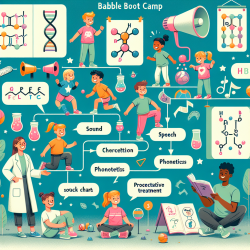As Special Education Directors, our mission extends beyond administrative duties; it involves pioneering approaches that empower every child to reach their fullest potential. Among the myriad challenges we face, enhancing communication in autistic children stands as a paramount goal. Drawing inspiration from the insightful research presented in Language in Autistic Children by Don W. Churchill, this article aims to shed light on strategies that can significantly improve language development and communication skills in children with autism.
Autism Spectrum Disorder (ASD) encompasses a range of challenges in behavior, social interaction, and communication. The centrality of language impairment within this spectrum suggests that targeted interventions in language development can yield transformative outcomes. Churchill's work, which meticulously documents the language functions of autistic children, offers a beacon of hope and a roadmap for effective intervention.
Here are some key strategies inspired by Churchill's research that practitioners can implement to enhance communication in autistic children:
- Structured Language Tasks: Creating a sequence of structured tasks can help systematically explore and develop the child's language capabilities. This approach aligns with Churchill's methodical examination of language function, offering a tailored pathway for each child's unique needs.
- Individual Case Studies: Emulating Churchill's detailed case studies, practitioners can gain deeper insights into the individual profiles of autistic children. This personalized understanding is crucial for designing interventions that address specific language deficits and leverage strengths.
- Systematic Evaluations: Regular, systematic evaluations are essential to track progress and adjust strategies accordingly. Churchill's emphasis on comprehensive data presentation, including graphs and illustrations, highlights the importance of detailed assessment in guiding therapeutic interventions.
- Central Language Disorder Focus: Acknowledging the central role of language disorder in autism, as Churchill posits, underscores the need for interventions that are primarily language-focused. This perspective can shape more targeted, effective therapy sessions that address the core challenges faced by autistic children.
- Therapeutic Intervention Efforts: Churchill advocates for systematic investigation of language skills as a cornerstone of therapeutic intervention. This approach encourages a focus on developing communication skills as a foundation for broader social and behavioral improvements.
Implementing these strategies requires a commitment to understanding the unique language development challenges faced by autistic children. It also necessitates a collaborative effort among special education directors, speech therapists, educators, and families. By fostering an environment that prioritizes language development, we can unlock new avenues of communication for autistic children, enabling them to express themselves more fully and interact more effectively with the world around them.
To delve deeper into the research and methodologies that underpin these strategies, I encourage practitioners and educators to explore Language in Autistic Children. This foundational work not only enriches our understanding but also equips us with the tools to make a tangible difference in the lives of children with autism.










